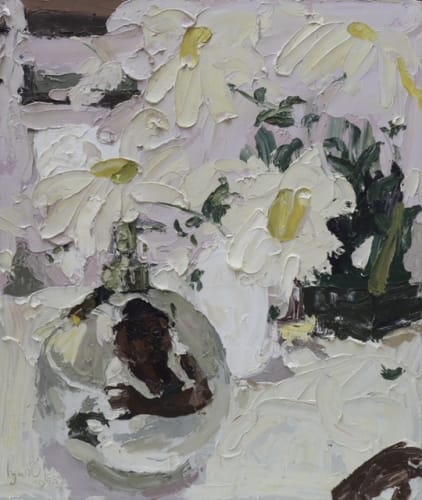Naming forms a very complex and vital part of human culture and language. From its political uses in acts of erasure and reclaiming to its practical and intimate roles within private and public spaces, names serve to allude to and confirm the presence of a thing. The naming or re-naming of a thing helps to establish an existing identity or herald a new one. In several African societies, names often reflect cultural, religious and ethnic identity. Often designed as an elaborate ceremony that happens days after birth and involves contributions from extended family and community, the naming of a child is a sacred act that can reflect the family's hopes, beliefs, situations and values.
To commemorate the opening of Rele’s new space in Los Angeles, the gallery presents work by represented artists in dialogue with the concept of naming, mainly by exploring their own names. The names we bear often function as one of the earliest ways in which we experience ourselves and are experienced by others. Consciously or unconsciously, self-chosen or given, a name becomes an introduction, a prologue, one that carries the weight of cultural, religious and social contexts. Explored literally or conceptually, the gallery presents works that contemplate a recognition of self through the lens of a name. How do we understand the identities and embodiments in a name? Is the act of naming neutral and arbitrary or is it rooted in specific ideas and customs? What do our names mean to us?
Titled Echezona’m (forget me not) after her mother, Chidinma Nnoli’s diptych imagines her name as an embodiment of the women she’s descended from and a reflection of how their identities live on through her. In her painting, she refrains from a literal engagement with the idea of a name considering the erasure of women’s names that often occurs through marriage. Nnoli considers her name as composed of the qualities, experiences, and spirit of the women who have come before her.
Drawing from his name which translates as ‘Everything has an end’, Ameh Egwuh’s painting reflects on the finitude of existence. Titled Calm, the piece imagines a state of serenity even within difficult times, through the acknowledgment that everything is temporal. For the artist, his name serves as a way of address and a reminder of transience.
Neec Nonso’s series of photographs engages with the rich layers of meaning, emotion, and culture hidden within the act of naming. Contemplating his decision to change his birth name due to its association with Christianity, Nonso addresses the misinterpretation of Igbo and Yoruba deities' names within the context of religion. Simultaneously, he reflects on names as carriers of history and culture, shaping how we see the world.
Challenging the well-known Shakespearian phrase ‘A rose by any other name would smell as sweet’, IyunOla Sanyaolu considers naming as a reflection of self in her painting A daisy by any other name won’t smell as sweet. Featuring images of daisies and a reflection of the artist, the painting considers the identity of these distinct forms as rooted in their names. With a first name that loosely translates to ‘precious bead’, Sanyaolu sees the flower's preciousness as a representation of her self-awareness and identity.
Drawing from her experience growing up Catholic and the significance of her name Marcellina which means ‘little warrior’, Marcellina Akpojotor’s work focuses on the profound significance of names and the process of self-acceptance and reinvention. In her work, she contemplates the intricate tapestry of influences that shape our existence, such as our parents' aspirations, cultural heritage, and our aspirations, among other elements.
bell hooks argues that naming is a political act, with the ability to shape and control our perception of the world. As the gallery moves into a new space with hopes of defining new directions and possibilities, we invite an inquiry into a fundamental description of existence. In exploring this revered act (especially within Nigerian and African societies), how do we understand our roots and the possibilities ahead?




